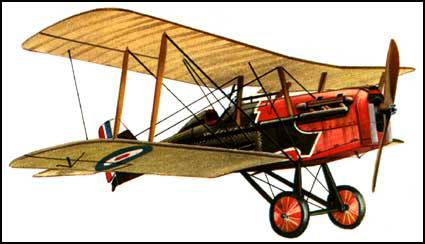SE-5a Fighter
The S.E.5 was designed by H. P. Folland, J. Kenworthy and F. W. Goodden at the Royal Aircraft Factory. Developed during the summer of 1916 the S.E.5 had two fixed machine-guns, a Vickers was synchronized and the Lewis was installed on the upper wing to fire over the propeller disk.
During a test flight of the S.E.5 on January 28, 1917, the pilot and co-designer, F. W. Goodden, was killed in a crash. It was discovered that there was a structural weakness and the spars and struts had to be strengthened.
Only 58 S.E.5 were built and they only served three months on combat duty. An improved version, the S.E.5a reached the Western Front in June 1917. The S.E.5a was extremely popular with Allied pilots and became the plane used by Mick Mannock, Billy Bishop, James McCudden, Reginald Hoidge and Arthur Rhys-Davids. The S.E.5a was fast, manoeuvrable at high altitude and easy to fly. It outclassed all German aircraft until the arrival of the Fokker D-VIII in 1918. Over 2,700 S.E.5 machines were used during the First World War.

Performance Data of the S.E.5a | |
|---|---|
Type | fighter |
Engine | 200 hp Wolseley |
Wing Span | 26 ft 7 in (8.12 m) |
Length | 20 ft 11 in (6.4 m) |
Height | 9 ft 6 in (2.9 m) |
Maximum Speed | 138 mph (222 kph) |
Maximum Height | 19,500 ft (5,944 m) |
Endurance | 2 hours 30 minutes |
Armament | 2 machine-guns |
